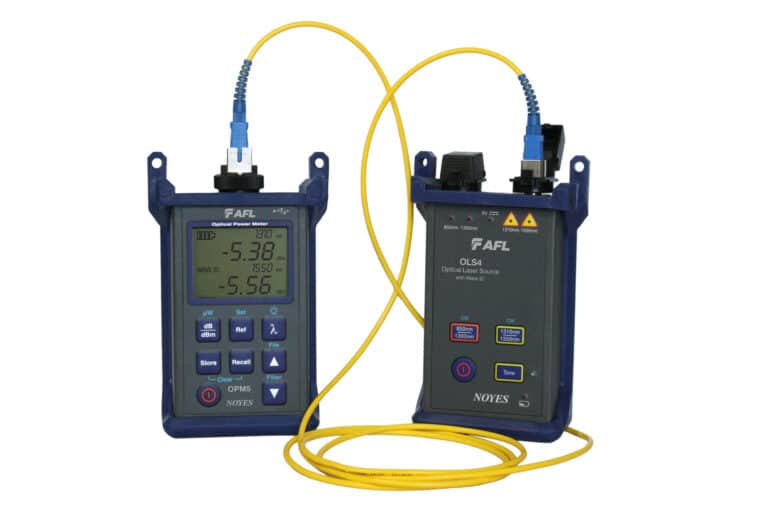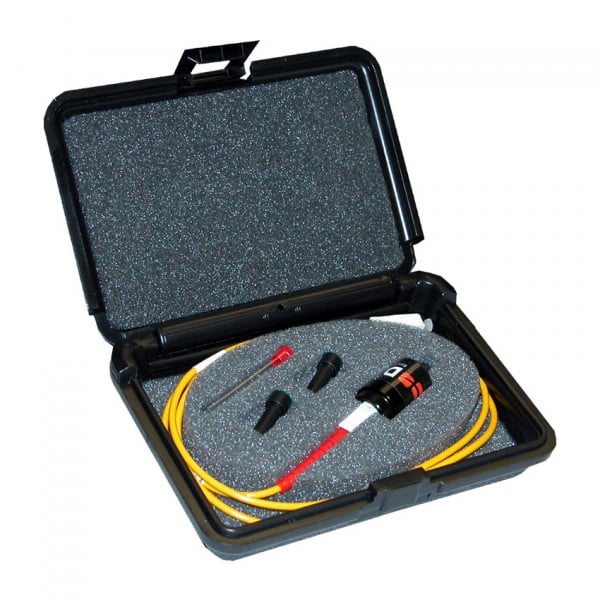Discovering Advanced Techniques in Fiber Measurement and Their Sector Impact
In today's fabric market, precise fiber dimension is necessary for maximizing manufacturing procedures and conference sustainability goals. With the surge of cutting-edge imaging and logical devices, you can acquire deeper understandings right into fiber structure and make-up. This change not just boosts effectiveness yet also lines up with industry criteria. As these sophisticated techniques develop, you may question exactly how they can additionally change making techniques and impact the future of textiles.
The Relevance of Accurate Fiber Measurement in Fabric Manufacturing

Cutting-edge Imaging Technologies for Fiber Evaluation
When it pertains to fiber evaluation, ingenious imaging innovations are game changers. High-resolution microscopy strategies and spectroscopic evaluation techniques supply you with comprehensive understandings into fiber framework and structure. These innovations not only enhance precision but also enhance your measurement processes.
High-Resolution Microscopy Techniques
High-resolution microscopy methods have revolutionized fiber analysis, enabling researchers to picture fibers at unprecedented degrees of information. With techniques like scanning electron microscopy (SEM) and transmission electron microscopy (TEM), you can observe fiber morphology, surface attributes, and cross-sections with amazing clearness. These techniques allow you to compare different fiber types and evaluate their structural honesty. You'll discover that high-resolution imaging helps determine flaws, inclusions, and other important attributes that can affect material efficiency. In addition, advancements in electronic imaging software program have improved photo processing, making it much easier to evaluate and analyze information. By embracing these innovative methods, you can drive higher accuracy in fiber dimension and add to innovations in numerous sectors, from textiles to compounds.
Spectroscopic Evaluation Techniques
Spectroscopic evaluation methods have become effective tools for fiber characterization, giving understandings that complement high-resolution microscopy. You can utilize strategies like infrared (IR) spectroscopy, which helps determine the chemical structure of fibers by gauging molecular vibrations. Raman spectroscopy supplies one more layer of detail, enabling you to evaluate molecular frameworks through spreading of monochromatic light. These techniques not just improve your understanding of fiber residential or commercial properties however also allow the detection of impurities and structural variants. By integrating spectroscopic strategies with conventional microscopy, you gain a more substantial view of fibers' physical and chemical characteristics, enhancing your study precision. Eventually, these innovations can especially impact product selection and quality control in different markets.
Advanced Analytical Tools and Their Applications
As you explore the domain name of fiber dimension, you'll discover that sophisticated logical tools play a necessary role in improving accuracy and effectiveness. Techniques like high-performance fluid chromatography (HPLC) and gas chromatography (GC) allow you to analyze fiber make-up with outstanding accuracy. These tools allow you to identify certain parts and impurities, making certain quality control in your products.Additionally, making use of scanning electron microscopy (SEM) offers you a thorough view of fiber framework, assisting you comprehend just how different treatments influence performance. Modern software program likewise simplifies data analysis, making it easier to analyze complicated outcomes and work together throughout groups.

Impact of Fiber Measurement on Manufacturing Performance
While specific fiber dimension might feel like a small information, it significantly affects manufacturing effectiveness in the textile sector. When you purchase precise fiber dimension strategies, you can optimize basic material usage and reduce waste. This brings about far better resource allowance, enabling you to produce top quality materials without overusing resources.By understanding fiber characteristics, you can customize production procedures to specific products, improving your workflow and lowering downtime. Recognizing the exact tensile stamina of fibers allows you adjust equipment settings for maximum performance. This not only quickens production yet also guarantees consistent product quality.Moreover, accurate fiber measurement helps you determine issues early in the assembly line, preventing expensive reworks and hold-ups (optical fibre diameter analyzer). Overall, applying advanced fiber measurement strategies enhances operations, enhances effectiveness, and ultimately enhances productivity. In today's affordable market, every information counts, and precise fiber measurement is a game-changer
Sustainability Factors To Consider in Fiber Evaluation Techniques
When you examine fiber, it's vital to ponder sustainable methods that can lessen environmental impact. Utilizing green measurement approaches and minimizing waste in your analyses can significantly boost your general sustainability. In addition, integrating lifecycle read this post here evaluation right into your methods can provide a more clear photo of your fiber's ecological impact.
Eco-Friendly Measurement Techniques
Taking into consideration the growing demand for sustainability in various industries, adopting eco-friendly dimension techniques for fiber assessment has actually come to be vital. You can start by using safe solvents and eco-friendly materials in your screening procedures. These options not just decrease environmental impact but likewise enhance safety and security for your team. Applying electronic dimension techniques can additionally minimize waste, as they often call for fewer physical examples and resources. Furthermore, leveraging ingenious technologies like near-infrared spectroscopy can generate precise outcomes without dangerous chemicals. By choosing these greener techniques, you add to an extra sustainable future while preserving high requirements in fiber quality. Inevitably, incorporating green practices right into your fiber analysis not just aligns with customer values but additionally enhances your brand's online reputation.
Decreasing Waste in Analysis
To efficiently reduce waste in fiber assessment, you can implement approaches that streamline your screening procedures and lessen resource intake. Begin by optimizing sample sizes; using smaller sized examples can produce precise outcomes while preserving materials. Next, read buy multifunctional tools that enables for different tests without needing multiple devices, decreasing energy and resource usage. You ought to additionally consider taking on electronic devices for data collection and analysis, which can lower paper waste and improve effectiveness. Consistently training your team on lasting techniques ensures every person's aboard with waste decrease objectives. Finally, teaming up with providers that focus on sustainability can even more enhance your initiatives, enabling you to analyze fibers while preserving a dedication to environmental responsibility.
Lifecycle Analysis Assimilation
Incorporating lifecycle evaluation (LCA) into fiber evaluation methods can substantially boost sustainability initiatives. By analyzing the environmental impacts of fibers from production to disposal, you can determine areas for enhancement. This technique assists you recognize source intake, power use, and waste generation throughout the fiber's life.When you integrate LCA, you're not just gauging fiber characteristics; you're likewise considering the eco-friendly impact. This all natural sight allows you to make educated decisions that prioritize sustainability. You might choose fibers that require fewer sources or have a reduced carbon effect. Eventually, LCA empowers you to optimize procedures, minimize waste, and advertise environmentally pleasant options in fiber production, aligning your exercise with international sustainability objectives.
Sector Specifications and Laws Forming Fiber Measurement
As the need for high-grade fiber products expands, understanding the market criteria and laws that govern fiber measurement becomes important. These guidelines guarantee consistency, precision, and safety and security in the dimension procedure, which inevitably influences item top quality. Organizations like ASTM International and ISO established forth criteria that suppliers have to comply with, covering numerous facets such as fiber recognition, stamina screening, and moisture content evaluation.

Future Fads in Fiber Measurement and Textile Production
Exactly how will developments in modern technology reshape fiber dimension and textile production? You'll see a shift towards automation and real-time data evaluation, enhancing precision and efficiency. Smart sensors will certainly keep an eye on fiber residential or commercial properties continually, enabling for prompt adjustments in manufacturing. This means you can anticipate better fabrics with less waste.Moreover, AI and equipment knowing will certainly predict patterns in customer preferences, allowing manufacturers to adapt promptly. fibre testing equipment. By incorporating blockchain innovation, you'll have far better traceability of materials, making certain sustainability and honest sourcing.Virtual fact and enhanced truth will play a duty too, using immersive training experiences for workers on fiber handling and production processes.As you accept these adjustments, the textile industry will change right into a much more receptive, lasting, and innovative field, establishing brand-new requirements for high quality and performance. The future of fiber measurement and fabric production is bright, and it's time to get on board
Frequently Asked Concerns
What Are one of the most Typical Fiber Kind Measured in the Market?
In the market, you'll usually come across all-natural fibers like cotton and woollen, in addition to artificial choices such as polyester and Going Here nylon. Each type has distinct buildings, influencing their dimension and application in numerous items.
Exactly How Do Fiber Measurements Affect Consumer Item Top Quality?
Fiber dimensions straight influence consumer item top quality by guaranteeing consistency, sturdiness, and performance. When you understand these metrics, you can make enlightened selections, causing improved fulfillment and much better overall experiences with the items you utilize.
What Training Is Required for Fiber Dimension Technicians?
To come to be a fiber measurement specialist, you'll require customized training in textile science, dimension methods, and equipment procedure. Hands-on experience and qualifications can improve your skills, making you proficient in accurate fiber evaluation and high quality assurance.
Exist Any Type Of Certifications for Fiber Dimension Professionals?
Yes, there are certifications for fiber dimension experts. You can pursue choices like the Certified Optical Fiber Service Technician (CFOT) or various industry-specific qualifications that enhance your expertise and reputation in fiber measurement and screening.
Exactly How Can Tiny Companies Implement Fiber Measurement Techniques Properly?
You can execute fiber dimension techniques properly by investing in economical devices, training your team, and establishing clear methods. Collaborate with market experts and continually refine your procedures to boost accuracy and effectiveness with time.